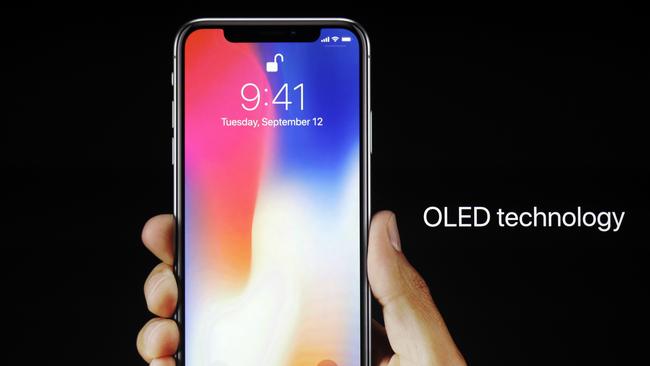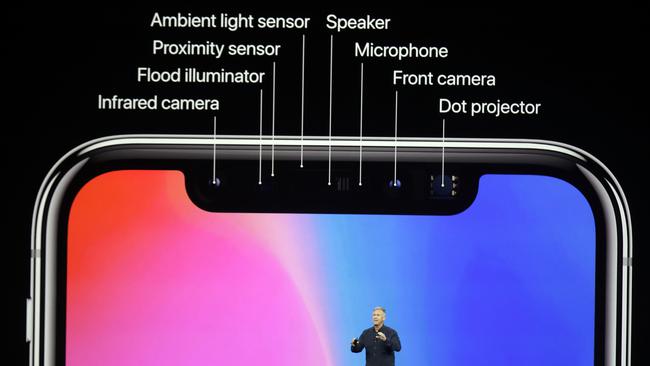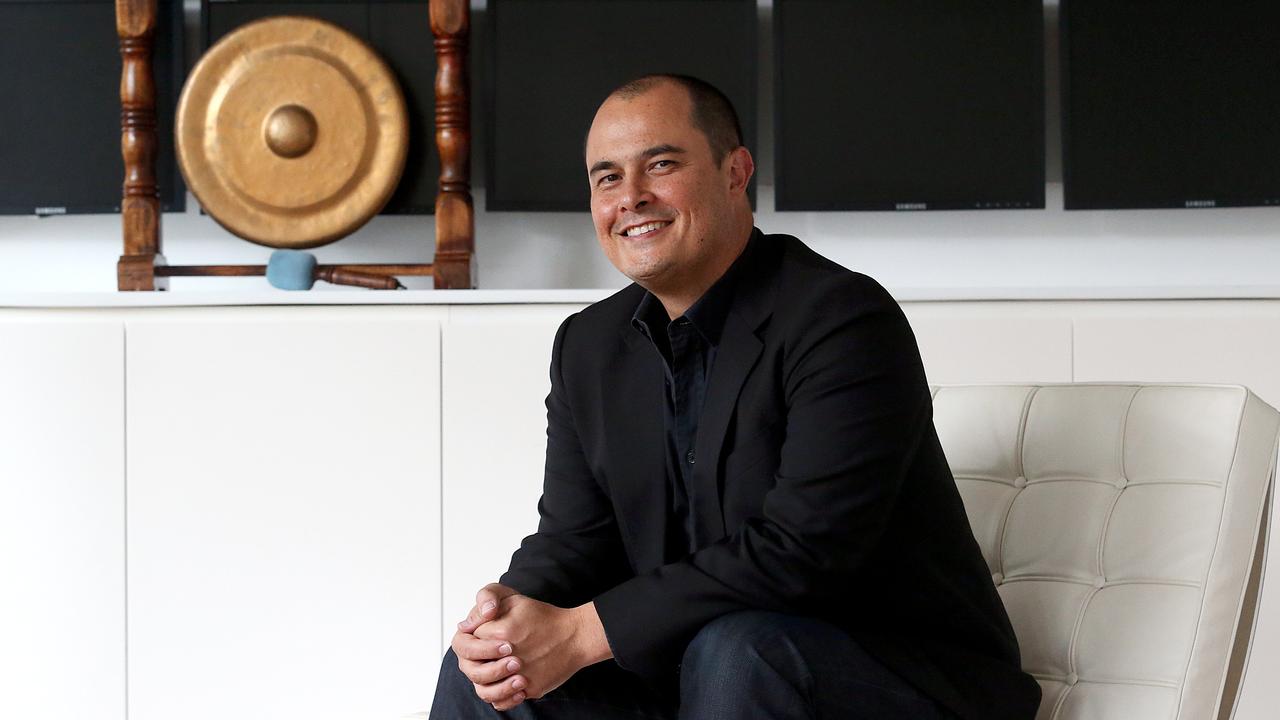Apple iPhone X, iPhone 8: Release date, price, key features
Apple’s “gamechanging” iPhones include the iPhone X. Here are key details, including Australian price, release dates.

Apple has announced three new iPhones, a 4K capable Apple TV and a third version of its Watch at the first launch event held at its new Apple Park campus.
The line up was exactly as predicted in the days leading up to the event: two iPhone successors to the current models, iPhone 8 and iPhone 8 Plus, and a new iPhone 10 — written as iPhone X with roman numeral X.
The iPhone 8 models use Apple’s traditional home button and fingerprint authentication. iPhone X on the other hand is where Apple plans to take the smartphone, with no home button and a 5.8-inch display that takes up the full front side of the phone, except for a small area at the top with cameras and sensors.
• iPhone X vs iPhone 8: Which one should you buy?
Apple chief executive Tim Cook said the newest flagship handset is a milestone for the company a decade after the first iPhone release, calling it the ‘future of the smartphone’.
“Ten years later, it is only fitting that we are here in this place, on this day to reveal a product that will set the path for technology for the next decade,” Cook said, calling the iPhone X “the biggest leap forward since the original iPhone.”
All phones have a hard glass front and back which at a hands-on demonstration did tend to attract fingerprint marks.
All models however support wireless charging. Importantly they support the Qi standard of wireless charging which is increasingly available at public places such as airports, and through third party suppliers such as Belkin and Mophie. In future you won’t have to take your cables with you when you’re on the go. Wireless chargers too will be available that fit under the dashboard of your car.
Apple also announced a souped up version of its Apple TV box that supports very high resolution 4K TVs. It will handle content in 4K with high dynamic range (HDR) quality.
The third version of Apple Watch — Series 3 — is available with Wi-Fi connectivity, or with cellular connectivity as well.

Big surprise for Australians
The cellular version of the watch will allow you to use the same phone number for making and taking calls that you use on your iPhone, even when your iPhone isn’t around.
Being able to use the one phone number across multiple SIM cards is doable in the US, but hasn’t been available in Australia.
Apple achieves this through an electronic SIM card in the watch. You activate this feature through your phone and your number is authenticated by your telco, in the same way a bank might authenticate a transaction.
From then onwards, the watch will use that iPhone’s number. Apple says Telstra and Optus will offer the dual-SIM feature at launch, with Vodafone coming aboard later in the year.

Pricing
Apple Australia also has released local pricing of the devices. The flagship iPhone X will cost $1579 for a handset with 64GB, or $1829 for one with 256GB of storage. Handsets will be available in silver and space grey.
You can order iPhone X from October 27 and Apple says it will be on sale from November 3.
There are concerns however about Apple’s manufacturers being able to make enough iPhone X units to satisfy demand.
iPhone 8 and 8 Plus is cheaper and on sale sooner, and will be available in space grey, silver and gold. Again there will be both 64GB and 256GB models. The 64GB models start at $1079 for iPhone 8 and $1229 for iPhone 8 Plus. Preorders begin this Friday, September 15, with the phone going on sale the following Friday, September 22.
Jobs recording opens launch
The event opened with a recording of co-founder Steve Jobs - after whom the new theatre is named, followed by a tribute from today’s chief executive Tim Cook, who said he was honoured to open the theatre in Jobs’ name.
“Over a decade ago he began to work on a new campus for Apple,” Cook says.
“Steve’s vision and passion lives on here at Apple Park and everywhere at Apple. Today and always we honour him,” Cook says.
Energy wise the big spaceship-shaped building at Apple Park is powered by 17 megawatts of solar power. It is powered totally be renewable energy. Staff would start moving into the 170 acre campus in earnest later this year.
“It’s powered by 100 per cent renewables with one of the world’s largest solar installations right here. We’ve got a great visitors’ centre than will be open later this year and we’ll welcome everyone”, Cook says.
The visitors’ centre will have a retail store and an augmented reality experience.
Apple says that in the event of an earthquake - an ongoing possibility in California - the building can shift 4 and a half feet. Cook also highlighted Apple’s relief effort in the wake of the two hurricanes in the US/Caribbean region before it was down to device business.
Those at the event had to wait almost two hours for the star of the show - iPhone X - which Cook described as the biggest leap forward since the original iPhone.
Face recognition technology
iPhone X is based on the premise that all of the front of a smartphone can be display. The exception is a small section at the top which contains, among other things, a camera, infrared sensor, ‘dot projector’ and proximity sensor.
These enabled its face recognition technology - Face ID - to work in all sorts of circumstances. When you map your face initially, it maps not just the front view but progressively more side-on views. It’s not unlike how you register different parts of a finger for fingerprint unlocking.
Apple says the regular and infrared cameras, dot projector, proximity sensor, flood illuminator and other sensors on the front combine to authenticate users whether or not they are wearing glasses or a hat, and whether it’s daylight or night.
The dot projector for example projected 30,000 invisible dots when authenticating your face in low light.
Apple promised that authentication takes place on the phone; your biometric image used for authentication is stored securely on the phone and is not sent to the cloud.
With machine learning, the phone also will track how your appearance changes in time, so if you grow a beard, or change your hairstyle, face recognition should still work. It will be fascinating to see if and how this works.
Apple says it has tested the feature even with 3D masks from Hollywood, to ensure Face ID cannot be compromised by people trying to unlock the phone using photos, videos, or 3D replicas of people.
It concluded that its face ID error rate was 1 in 1 million, compared to a 1 in 50,000 error rate for Touch ID fingerprint recognition. Still, if you were worried about this, or had a lookalike evil twin and didn’t trust Face ID, you could revert to entering a passcode.
Additionally, the phone requires that you are actively looking at it when you unlock the phone.
So to use this phone, you look at it while you pick it up, and then swipe up from the bottom to the home screen. Face ID also is used with Apple Pay and for logging into other apps that currently se fingerprint authentication.
Apple Pay
To pay with Apple Pay, you double click the phone at the side and then look at it.
iPhone X is the only one of the three phones to have an organic 5.8-inch LED (OLED) display. It’s Apple’s highest resolution phone display: 2436 x 1125 pixels at 458 pixels per inch density.
Apple says there were always pluses and minuses with OLED displays. They offer great contrast, high resolution and were thin, but they were not necessarily bright enough and had issues with colour accuracy and variation. Apple had worked to overcome these problems.
Phone X is water resistant and dust resistant, and has Apple’s truetone feature found on the iPad Pro. The image adjusts to the ambient background.
Apple turned to a new feature with iPhone X - animojis or animated emojis in iMessages. It seems a prelude to the iPhone being capable of creating your own cartoon animations.
You choose an emoji (about 10 are available now), and Apple then tracks your face movement and audio and mimics it with the animoji. It appears in other people’s iMessages feeds as looping video.
iPhone X has dual 12MP back facing cameras, with f/1.8 and f/2.4 apertures, dual optical image stabilisation, and a quad LED two-tone flash.
Both iPhone X and the bigger iPhone 8 (Plus model) supports a new effect called portrait lighting.
Apple maps your facial contours and the background which you then can vary to achieve different theatrical lighting effects, including in monochrome.
The phone is powered by Apple’s new A11 bionic chipset, and Apple claims 2 more hours of battery life than with iPhone 7.
Chris Griffith is at the Apple launch event in Cupertino courtesy of Apple



To join the conversation, please log in. Don't have an account? Register
Join the conversation, you are commenting as Logout